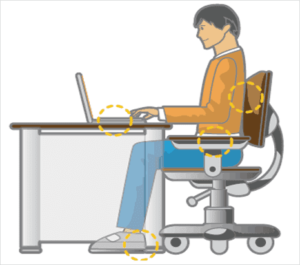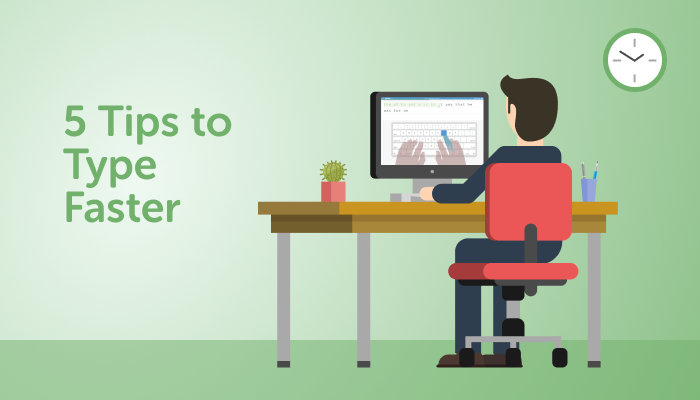5 Tips to Type Faster
Do you struggle to keep up with classmates or colleagues when it comes to typing? Typing is a critical skill in the digital age today. When you’re proficient at typing, you are more productive! So how can you type faster in a few simple steps?
Typing.com’s Top 5 Typing Tips
Whether you are an absolute beginner or looking to brush up on your typing skills, we have five simple things you can do to become an expert typer in no time!
Typing.com’s Top 5 Typing Tips:
- Start slow and work your way up
- Use all ten fingers
- Posture Matters
- Say the letters out loud as you go
- Practice, Practice, Practice!
Ready to become a faster typer? Read on for everything you need to know!
1. Start Slow and Work Your Way Up
Like learning to ride a bike, you wouldn’t start on the highest hill in town. You get started with training wheels and work your way up to riding on your own. Typing is the same. You can’t start with long, difficult sentences. You need to start one letter at a time!
One of our easiest tips is simply starting simple and working your way up. Don’t rush it. You will be a typing master in no time!
2. Use All Ten Fingers
While there are plenty of people who can type quickly with just two fingers, typing with all ten fingers dramatically increases your accuracy and speed.
Your keyboard is made up of 101 different keys. If you type in a way that each finger is responsible for specific keys, your fingers move as little as possible. You conserve energy, build muscle memory, and type faster.
You may have noticed the little marks on the ‘F’ and ‘J’ keys? They are there to show you where your fingers should line up to make it even easier to start typing with all 10 fingers today.
3. Posture Matters
Though you might expect manual labor to be more trying on your body, for some, extensive sitting and keyboard work can be even more damaging.
That is why having proper posture in front of your computer is key. So what does proper typing posture look like?
- Sit up straight with your feet flat on the floor. Be careful to avoid crossing your legs under you or propping them up under your desk.
- You want your elbows to have a 90-degree angle with your arms close to your side. Adjust your chair height if you find your shoulders hunching.
- Fingers should be curved over the keyboard with your thumbs near the space bar. Avoid resting your wrists on the computer while typing, using the wrist pad for breaks only.
- And finally keep your head and neck facing your screen. If you are using two screens, try to avoid excessively turning and tilting.

4. Say the Letters Out Loud
Like proofreading a paper, it can help to read things out loud for increased comprehension and memorization. When you first start to type with all ten fingers, it can help say each letter out loud. This will help you connect the location and the keys in your mind, eventually leading to full memorization.
5. Practice, Practice, Practice
And finally, what it all comes down to is practice, practice, practice! Fifteen minutes a day of typing, practice can make a huge difference in your typing speed and accuracy—no matter your age or level.
This is where Typing.com can help! Test your typing speed to learn how you can start improving in just a few short minutes a day.
Still have questions?
Typing.com’s typing tutor helps students of all ages increase their typing speed and accuracy, all the while making it fun! Find out more about how Typing.com can help here.

